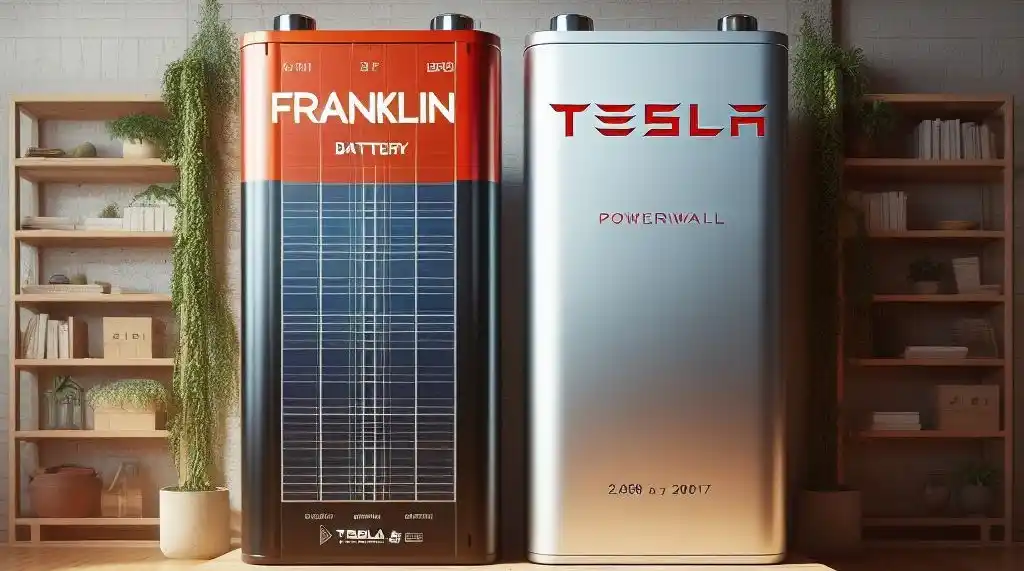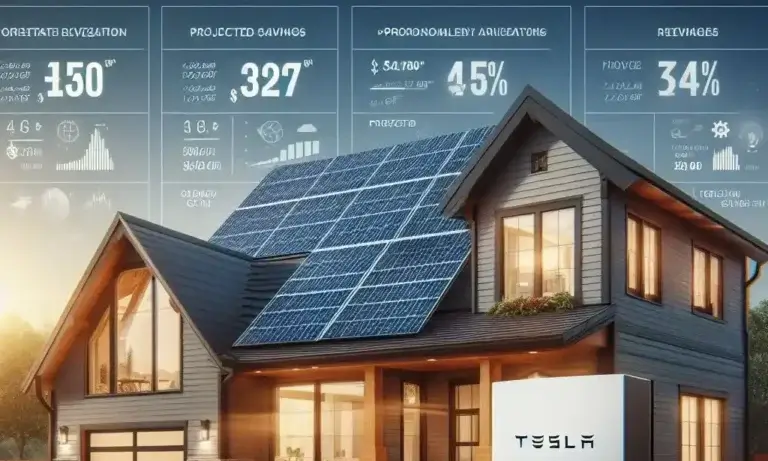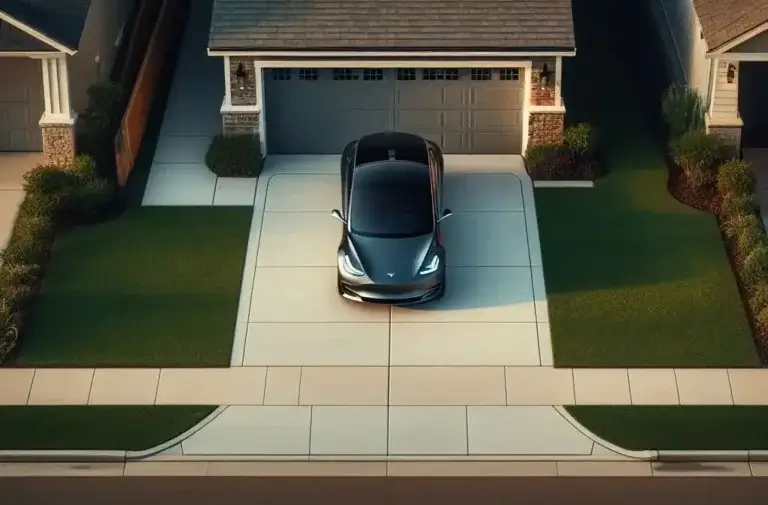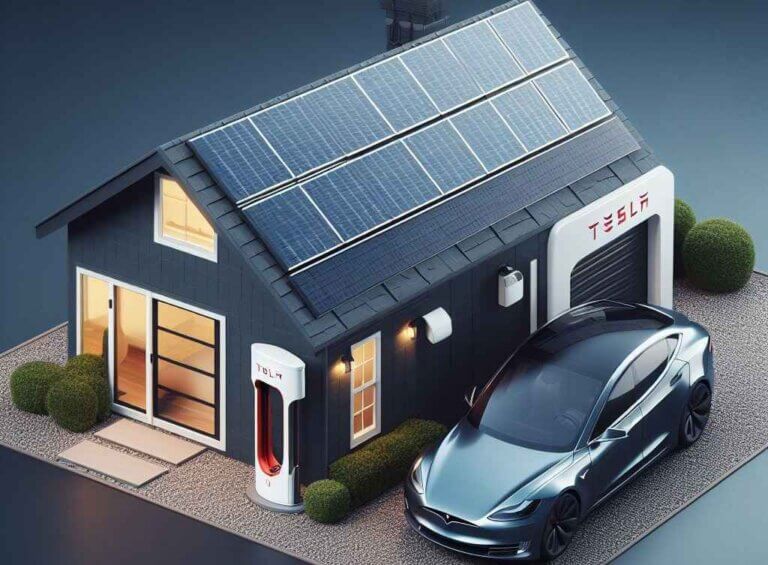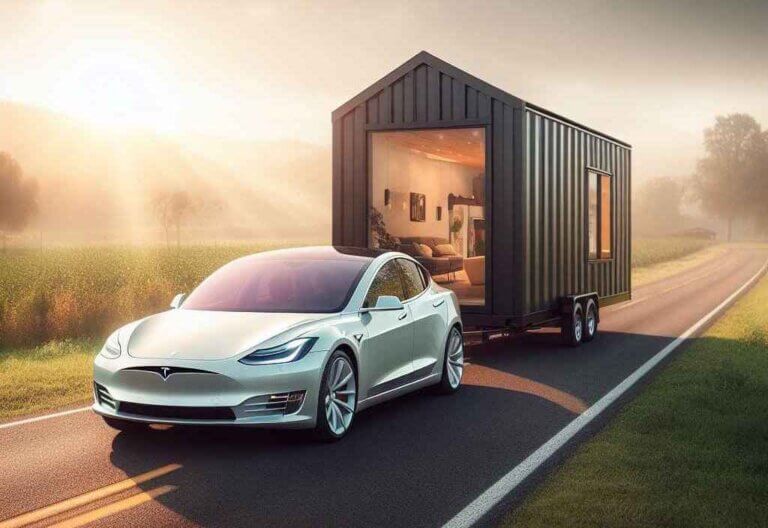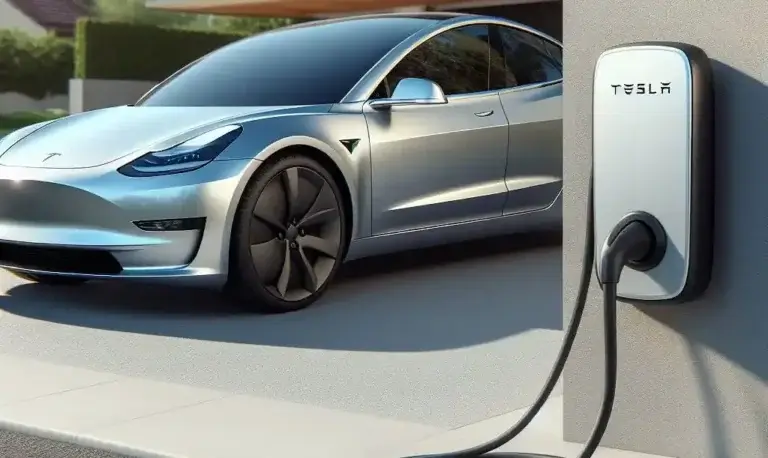Franklin Battery vs Tesla Powerwall: Which Home Battery is Best in 2024?
Are you considering adding a home battery system like the Franklin battery vs Tesla Powerwall to your home? Trying to decide which one is the better option?
You’ve come to the right place.
In this complete guide, we’ll compare the Franklin and Tesla Powerwall home batteries on all the key factors:
- Cost
- Storage capacity
- Power output
- Warranty
- Features
- And more
By the end, you’ll know exactly how Franklin and Powerwall batteries stack up and which is the best choice for your needs.
Let’s Read!
Table of Contents
An Introduction to Home Battery Storage
Before we get into the specifics of Franklin and Powerwall batteries, let’s do a quick overview of home battery systems.
What are home batteries and how do they work?
Home batteries, also called residential energy storage systems, store electricity for use at a later time – typically solar energy during the day for use at night.
The basic components are:
- Battery bank – Stores the energy
- Inverter – Converts DC electricity from solar panels into AC power for your home
- Monitoring system – Enables remote control and monitoring
During the day, the system captures extra solar energy produced and stores it in the battery bank. At night or during an outage when solar isn’t available, the inverter taps into the stored energy in batteries to power your home.
This allows you to use more of the solar energy you produce rather than exporting excess back to the grid.
What are the benefits of adding home battery storage?
Some of the key advantages include:
- Energy resilience – Keeps essential appliances powered during grid outages
- Maximize self-consumption – Use your own stored solar energy vs exporting to the grid
- Cost savings – Reduce energy bills with smart Time-of-Use management
- Clean backup power – Eco-friendly alternative to gas generators
Now let’s see how two of the top contending home battery options – the Franklin system and Tesla Powerwall – compare across the key decision factors.
Franklin Battery vs Tesla Powerwall: Company Backgrounds
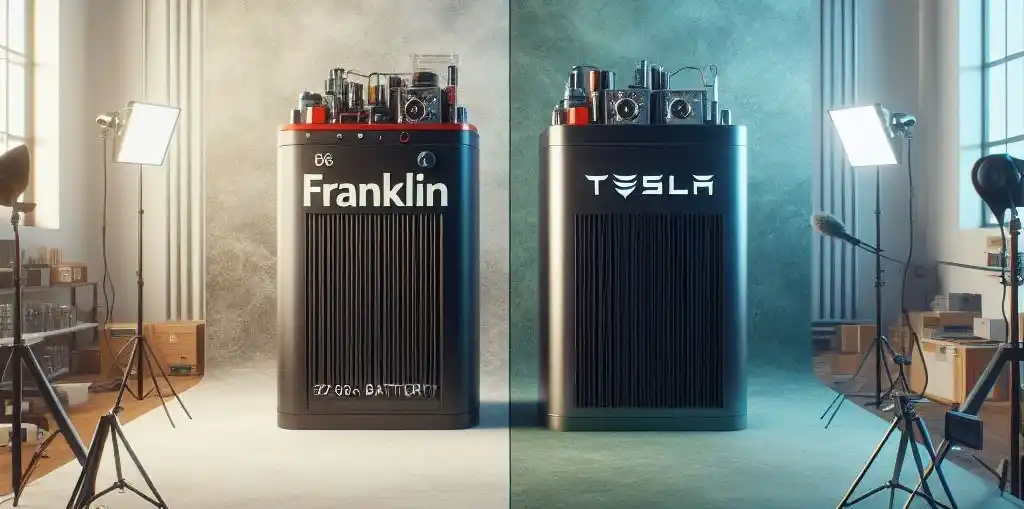
First, let’s look at some background on the two companies behind these home battery systems. Understanding their histories and areas of focus can give helpful context.
Franklin Energy Storage
- Founded in 2019, Franklin Energy Storage is a relatively new player in the home battery space.
- The Australia-based company focuses specifically on developing residential storage solutions.
- Their first product, the Franklin Home Power system, was released in 2021 to target the solar self-consumption market.
Tesla Energy
- Tesla’s energy division started in 2015 after it acquired SolarCity.
- Tesla is a major player in home energy storage with over 1 million Powerwall units deployed.
- In addition to the Powerwall system for homes, Tesla also sells utility-scale battery systems.
So in summary – Franklin is a newcomer that focuses specifically on home energy storage, while Tesla brings their advanced lithium-ion battery expertise from electric vehicles into the Powerwall for homes.
Next, let’s see how their first products compare.
Franklin vs Powerwall: Product Specs Compared
The table below shows a head-to-head comparison of core specs for Franklin and Powerwall home battery systems:
| Specs | Franklin Home Power | Powerwall 2 |
|---|---|---|
| Capacity | 13.6 kWh | 13.5 kWh |
| Max Power (Peak) | 10 kW | 7 kW |
| Continuous Power | 5 kW | 5 kW |
| Round Trip Efficiency | 90% | 89.5% |
| Depth of Discharge | 100% DoD | 100% DoD |
| Battery Chemistry | Lithium Iron Phosphate (LFP) | Lithium-ion NCA |
| Warranty | 12 years | 10 years |
| Installer Required? | No | Yes |
You can see the core specs are very comparable – both offer similar ~13.5 kWh capacity and 5 kW continuous power output. Peak power is the one key difference, with Franklin rated higher at 10 kW max compared to 7 kW for Tesla.
The roundtrip efficiency is also marginally better for Franklin at 90% vs 89.5% for the Tesla system.
Now let’s break down some of these key specs and terminology in more detail:
Storage Capacity
The energy capacity indicates the total amount of energy the battery can store, measured in kilowatt-hours (kWh). Both options provide approximately 13.5 kWh capacity.
For context, the average US home uses about 30 kWh per day.
So a 13 kWh battery could provide almost half a day’s power backup if needed.
Power Output
The power output determines the rate at which stored energy can be delivered from the battery, measured in kilowatts (kW).
There are two main metrics for power:
- Peak Power – The maximum instantaneous power that can be delivered for short bursts, typically for 10 seconds. Important for running high-draw appliances like air conditioners and stoves.
- Continuous Power – The power rating the system can sustain continuously without overheating. What you can count on for ongoing usage like fridges, lights, computers, etc.
On peak power output, the Franklin system is rated notably higher at 10 kW vs just 7 kW for the Powerwall 2.
This suggests Franklin can handle larger temporary power draws than the Tesla option. The continuous power output is identical at 5 kW for both systems.
Battery Chemistry
Both systems use lithium-ion battery technology, but the specific chemistries differ:
- Franklin – Lithium Iron Phosphate (LFP) chemistry
- Powerwall – Nickel Cobalt Aluminum Oxide (NCA) chemistry
The key advantage of LFP chemistry is improved thermal and chemical stability, which contributes to better safety and longevity. Tesla’s NCA chemistry offers higher energy density by volume in exchange for reduced stability.
Warranty Comparison
When making a major home upgrade purchase, warranty protection provides important peace of mind.
- The Franklin system comes with an industry-leading 12-year warranty.
- The Tesla Powerwall warranty is 10 years, on par with other premium batteries but with 2 fewer years of coverage compared to Franklin.
The longer 12-year warranty suggests Franklin is extremely confident in the long-term reliability of their LFP home battery system.
Ease of Installation
One potential advantage of the Franklin system is it’s designed for simplified DIY installation, whereas the Powerwall requires professional installation by a certified electrician.
Franklin utilizes an easy bolt-on mounting frame and modular battery connections for streamlined homeowner self-setup. This can avoid the added cost of hiring an installer while still meeting electrical code requirements.
Franklin vs Tesla Powerwall: In-Depth Feature Comparison
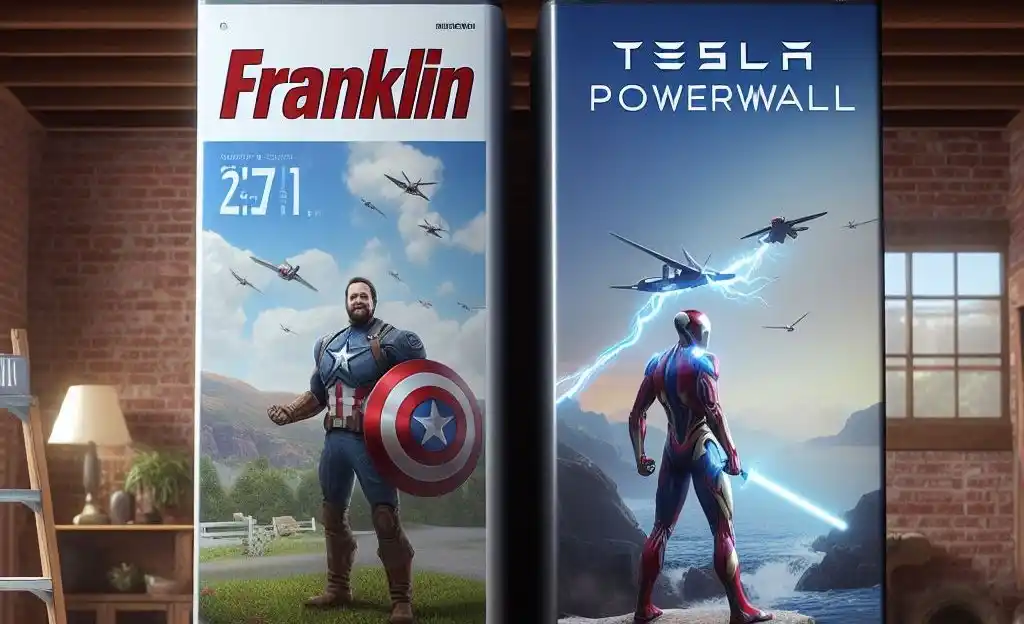
Beyond just power and capacity specs, there are also key differences between Franklin and Powerwall home batteries when it comes to features, capabilities, and performance factors:
Scalability
Both battery systems are modular and technically scalable, but Franklin seems better optimized for flexibility:
- The Franklin battery uses independent 1.3 kWh LFP modules that can be added as needed. Additional batteries simply stack and bolt onto the main mounting frame.
- Expanding Powerwall capacity requires installing whole new units with inverters. More labor-intensive and expensive to scale gradually.
So Franklin offers simpler, cheaper incremental growth capability as your needs change over time.
App Monitoring & Control
Franklin and Tesla both offer intuitive smartphone apps to monitor system performance and control settings:
- Franklin – Can view live power flow, change operation modes, track self-consumption etc. Very user-friendly.
- Powerwall – Provides energy data tracking and notifications. Integrates with the main Tesla mobile app.
The Franklin app functionality seems more robust overall for battery controls and solar analytics.
Backup Power & Outage Resilience
Keep in mind the Franklin and Powerwall batteries require the additional Powerwall Gateway (for Tesla) or Hybrid Inverter (Franklin) to enable full backup capability during grid failures.
Both battery systems can provide essential backup power to home loads automatically when the grid goes down. Key advantages of the Franklin system include:
- 10 kW peak power output for high temporary draws
- 90% roundtrip efficiency
- Long 12-year warranty coverage
So Franklin appears well-positioned as a resilient emergency power supply for home needs.
Existing Solar System Compatibility
Franklin and Tesla batteries can both be added to retrofit existing solar PV systems, but Franklin seems better optimized for simple DIY integration:
- Franklin easily stacks under solar arrays and utilizes plug-and-play AC coupling.
- Powerwall retrofits often require more electrical modifications and professional installation.
So Franklin offers a more seamless upgrade path for adding batteries to an existing home solar setup.
Smart Home Integration
This is an area where Tesla dominates given their massive smart home ecosystem and advanced Powerwall integration:
- Tesla Powerwall links directly into smart functionality across their cars, solar panels, apps, etc.
- Franklin has no native smart home partnerships or integrations at this point.
So for those invested in a Tesla-specific smart home environment, the Powerwall is the obvious choice to complement the intelligent connectivity.
Franklin vs Tesla Powerwall: Cost & Pricing Comparison
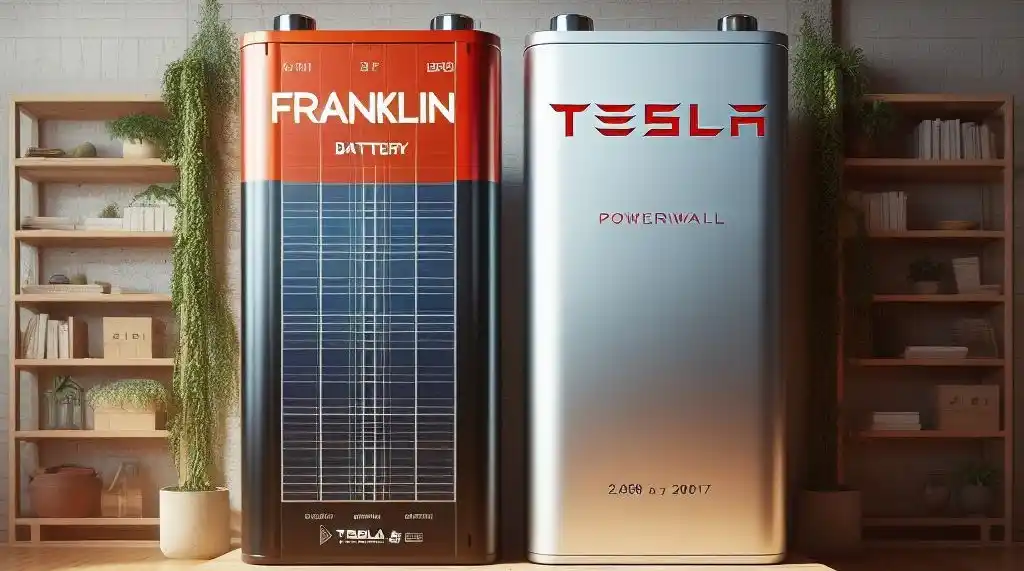
Of course, alongside power and features the other major consideration is cost. Let’s break down how the pricing shakes out across the Franklin battery line and Powerwall options.
Franklin Home Power Pricing
- Base Battery: $11,465 – Includes 13.6 kWh LFP battery capacity
- Add-On Batteries: $8,999 – Price per extra 13.6 kWh LFP battery
- 10-year service plan: $2,499 (Optional but recommended)
Tesla Powerwall Pricing
- Powerwall+ (13.5 kWh): $11,500 – Single battery with built-in inverter
- Additional Powerwalls: $7,500
- Support & Warranty: $1,500 – 10-year extended warranty & maintenance
- Gateway (for backup): $2,500
- Installation: $3,000+ – Exact price depends on complexity
So you can see both Franklin and Tesla have set prices that come out very comparable for the initial 13.5 kWh battery. The total cost can diverge quite a lot depending on factors like:
- Adding more batteries
- Support/warranty options
- No installation fee for Franklin vs $3k+ for Powerwall
- Potential local electrician discounts for DIY Franklin install
Overall it seems Franklin can provide notably better value especially if you want an easy DIY install and incremental future battery expansion. But costs depend heavily on your specific situation.
We also can’t overlook the considerable $7,500 federal tax credit available in the US for home battery systems. This 26% instant discount makes both Powerwall and Franklin prices even more affordable.
Franklin vs Tesla Powerwall: Public Perception & Reviews
With Tesla being such a household name, it’s not surprising that Powerwall batteries enjoy very widespread public awareness and support. Franklin is less recognized as a newcomer but early feedback has been overwhelmingly positive.
Across various solar and tech forums, user reviews and conversations consistently highlight Franklin’s strengths like:
- Exceptional warranty coverage
- Ease/flexibility of system expansion
- Ability to self-install for big cost savings
- Good app visibility into battery usage & solar production
By comparison, Powerwall benefits frequently raised include:
- Strong reliability & performance reputation from Tesla’s proven expertise
- Seamless integration for Tesla solar and EV owners
- Advanced smart connectivity and future-proofing
So in the eyes of homeowners themselves, it seems Franklin stands out for flexibility while Tesla wins on brand trust and intelligent features. Both enjoy strong support though among early adopters seeking energy independence.
Franklin or Tesla Battery: Which is the Better Buy?
The Franklin battery and Tesla Powerwall both deliver excellent modern home energy storage solutions that can provide power resilience, energy savings, and independence from the utility grid.
So which system is right for your home?
Here is a quick summary of key decision factors:
- Budget – Franklin can offer significantly lower total install costs for DIY.
- Easy modular growth – Franklin is better for simple system expansion over time.
- Max power output – Franklin provides 33% more peak capacity at 10 kW.
- Warranty length – 12-year coverage from Franklin for peace of mind.
- Existing solar retrofit – Franklin is simpler for self-installed battery integration.
- Advanced smart features – Powerwall dominates smart home ecosystem connectivity.
- Eco-conscious reputation – Tesla leads brand recognition and trust.
Ultimately there is no universally “best” option. The right battery depends entirely on your priorities for budget, features, longevity, and more. And you really can’t go wrong with either battery platform.
Hopefully, the specs, comparisons, and analysis above will help you make sense of these two capable and competitive modern home energy storage leaders.
And empower you to choose the battery that aligns with your personal needs and lifestyle. Giving you greater energy security, savings, and independence for decades to come.
Conclusion & Next Steps
Thanks for reading our complete Franklin battery vs Tesla Powerwall comparison guide!
To recap, both Franklin and Tesla provide well-engineered 13 kWh home battery systems. Franklin stands out for easier DIY installs, flexible modular growth, and budget value. And Tesla dominates in advanced intelligent connectivity and brand reputation.
Some final recommendations and next steps if you seek a home battery:
- Continue additional research between both platforms to clarify priorities
- Reach out for quotes from certified local battery installers
- Explore federal and state incentive programs to reduce costs further
- For a hands-on experience, consider touring local homes already using these batteries
Once you’ve evaluated all options against your home energy objectives, you can decide with confidence on Franklin, Tesla, or any emerging alternative bets.
Then join the thousands of households currently embracing battery storage for utility savings, eco-friendliness, and protection against blackouts!
FAQs:
Which home battery lasts longer, Franklin or Tesla?
The Franklin battery warranty coverage is an industry-leading 12 years, compared to 10 years from Tesla. So if longevity is critical, Franklin is expected to last longer.
Is the Franklin battery cheaper than Tesla?
Upfront hardware costs are very similar between Franklin and Powerwall. But Franklin allows self-installs avoiding $3k+ professional labor, making overall costs notably lower in most cases.
Can the Franklin battery power a whole house?
The 13 kWh Franklin battery can power essential loads to keep a whole home running during grid failures. The key is pairing with solar to recharge and maintain sufficient stored capacity. High power draws like AC may require occasional management.
Does Tesla make the best home battery?
Tesla home batteries earn very high marks for technology innovation, reliability, and intelligent connectivity within their ecosystems. But best is subjective based on specific consumer needs and preferences across cost, warranty, peak capacity, etc. where alternatives like Franklin can better fit priorities. No definitively superior choice.

